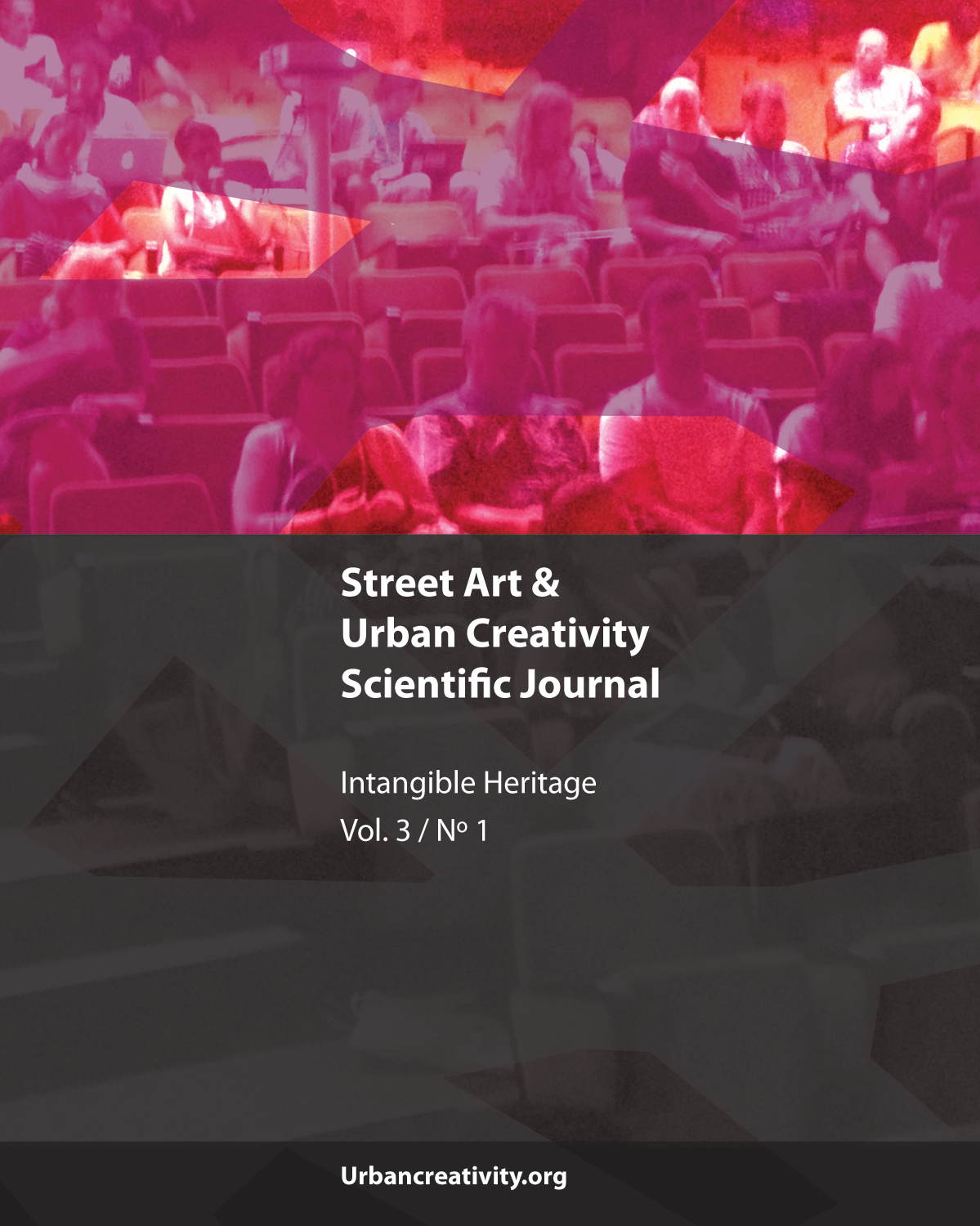Street Art & Urban Creativity
17.07.07
DOI:
https://doi.org/10.25765/sauc.v3i1.74Abstract
In recent decades, Urban Art has become one inescapable reality in the public space of cities throughout the world. It is such a significant trend that we can now talk about it as one of the main artistic movements of the 21st century, not only because of its geographical profusion, but also because of the diversity of artists, techniques, medium, discourses and languages that it embraces.
It is a phenomenon that is as global as it is singular, very relevant in the History of Art, by the complexity, creativity, ephemerality and paradoxes it implies. These characteristics make it difficult, on the one hand, to define, to study and reflect, but on the other hand promote a very strong artistic production and the renovation of the plastic discourse in the urban landscape.
Downloads
Global Statistics ℹ️
|
126
Views
|
34
Downloads
|
|
160
Total
|
|
Downloads
Published
How to Cite
Issue
Section
License
Those authors who publish in this journal accept the following terms:
-
Authors retain copyright.
-
Authors transfer to the journal the right of first publication. The journal also owns the publishing rights.
-
All published contents are governed by an Attribution-NoDerivatives 4.0 International License.
Access the informative version and legal text of the license. By virtue of this, third parties are allowed to use what is published as long as they mention the authorship of the work and the first publication in this journal. If you transform the material, you may not distribute the modified work. -
Authors may make other independent and additional contractual arrangements for non-exclusive distribution of the version of the article published in this journal (e.g., inclusion in an institutional repository or publication in a book) as long as they clearly indicate that the work was first published in this journal.
- Authors are allowed and recommended to publish their work on the Internet (for example on institutional and personal websites), following the publication of, and referencing the journal, as this could lead to constructive exchanges and a more extensive and quick circulation of published works (see The Effect of Open Access).













